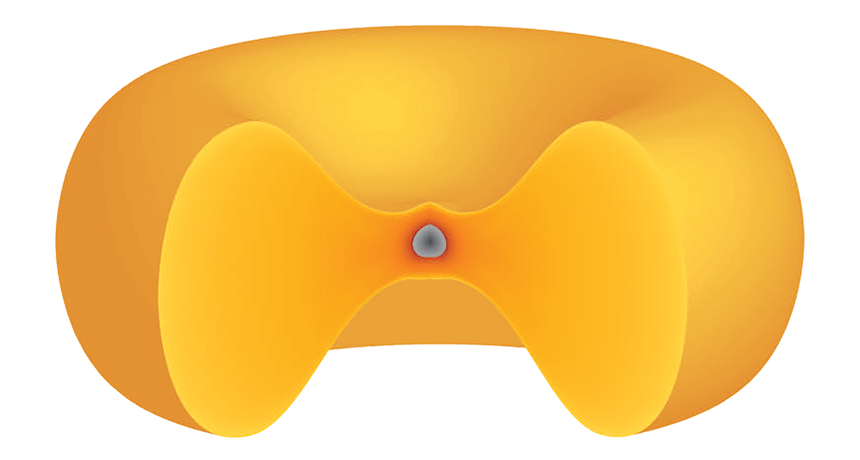celestial (in astronomy) Of or relating to the sky, or outer space.
centrifugal force A force that seems to pull a rotating body — or something on a rotating object (such as a rider of an amusement park ride) — away from the center of rotation.
computer model A software program that runs on a computer that creates a model, or simulation, of a real-world feature, phenomenon or event.
cosmic An adjective that refers to the cosmos — the universe and everything within it.
diameter The length of a straight line that runs through the center of a circle or spherical object, starting at the edge on one side and ending at the edge on the far side.
geological Adjective to describe things related to Earth’s physical structure and substance, its history and the processes that act on it. People who work in this field are known as geologists.
journal (in science) A publication in which scientists share their research findings with experts (and sometimes even the public). Some journals publish papers from all fields of science, technology, engineering and math, while others are specific to a single subject.
Mars The fourth planet from the sun, just one planet out from Earth. Like Earth, it has seasons and moisture. But its diameter is only about half as big as Earth’s.
mass A number that shows how much an object resists speeding up and slowing down — basically a measure of how much matter that object is made from.
moon The natural satellite of any planet.
planet A celestial object that orbits a star, is big enough for gravity to have squashed it into a roundish ball and has cleared other objects out of the way in its orbital neighborhood.
semi An adjective meaning “somewhat.”
shard A piece of broken pottery, tile or rock, or a hard, broken piece of anything that has an irregular shape.
solar system The eight major planets and their moons in orbit around our sun, together with smaller bodies in the form of dwarf planets, asteroids, meteoroids and comets.
synestia (adj. synestic) The somewhat flattened, jelly-doughnut-like shape that some planetary scientists suspect Earth may have developed after undergoing a violent collision early in its infancy. Simon Lock of Harvard University in Cambridge, Mass., and Sarah Stewart at the University of California, Davis, came up with the term, itself a mashup of syn- (meaning together) and Hestia, the Greek goddess of home, hearth and architecture.
Theia (in astronomy) The name of a hypothetical protoplanet, named for the Greek goddess of sight, who was also the supposed mother of the moon goddess Selene. If this protoplanet existed, the Mars-sized rocky world would have died in a violent collision with Earth, some 4.5 billion years ago. Part of the debris from it — and Earth — might have eventually collected to form a new celestial object: Earth’s moon.








